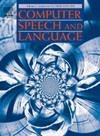FE-CFNER: Feature Enhancement-based approach for Chinese Few-shot Named Entity Recognition
IF 3.1
3区 计算机科学
Q2 COMPUTER SCIENCE, ARTIFICIAL INTELLIGENCE
引用次数: 0
Abstract
Although significant progress has been made in Chinese Named Entity Recognition (NER) methods based on deep learning, their performance often falls short in few-shot scenarios. Feature enhancement is considered a promising approach to address the issue of Chinese few-shot NER. However, traditional feature fusion methods tend to lead to the loss of important information and the integration of irrelevant information. Despite the benefits of incorporating BERT for improving entity recognition, its performance is limited when training data is insufficient. To tackle these challenges, this paper proposes a Feature Enhancement-based approach for Chinese Few-shot NER called FE-CFNER. FE-CFNER designs a double cross neural network to minimize information loss through the interaction of feature cross twice. Additionally, adaptive weights and a top- mechanism are introduced to sparsify attention distributions, enabling the model to prioritize important information related to entities while excluding irrelevant information. To further enhance the quality of BERT embeddings, FE-CFNER employs a contrastive template for contrastive learning pre-training of BERT, enhancing BERT’s semantic understanding capability. We evaluate the proposed method on four sampled Chinese NER datasets: Weibo, Resume, Taobao, and Youku. Experimental results validate the effectiveness and superiority of FE-CFNER in Chinese few-shot NER tasks.
FE-CFNER:基于特征增强的中文少量命名实体识别方法
尽管基于深度学习的中文命名实体识别(NER)方法已经取得了重大进展,但这些方法在少量识别场景中的性能往往不尽如人意。特征增强被认为是解决中文少量特征识别问题的一种有前途的方法。然而,传统的特征融合方法往往会导致重要信息的丢失和无关信息的整合。尽管结合 BERT 有助于提高实体识别率,但当训练数据不足时,其性能就会受到限制。为了应对这些挑战,本文提出了一种基于特征增强的中文 "零镜头 "NER 方法,即 FE-CFNER。FE-CFNER 设计了一个双交叉神经网络,通过两次特征交叉的交互作用将信息损失降到最低。此外,FE-CFNER 还引入了自适应权重和 top-k 机制来稀疏注意力分布,使模型能够优先处理与实体相关的重要信息,同时排除无关信息。为了进一步提高 BERT 嵌入的质量,FE-CFNER 采用了对比模板对 BERT 进行对比学习预训练,从而增强了 BERT 的语义理解能力。我们在四个抽样中文 NER 数据集上对所提出的方法进行了评估:微博、简历、淘宝和优酷。实验结果验证了 FE-CFNER 在中文少量 NER 任务中的有效性和优越性。
本文章由计算机程序翻译,如有差异,请以英文原文为准。
求助全文
约1分钟内获得全文
求助全文
来源期刊

Computer Speech and Language
工程技术-计算机:人工智能
CiteScore
11.30
自引率
4.70%
发文量
80
审稿时长
22.9 weeks
期刊介绍:
Computer Speech & Language publishes reports of original research related to the recognition, understanding, production, coding and mining of speech and language.
The speech and language sciences have a long history, but it is only relatively recently that large-scale implementation of and experimentation with complex models of speech and language processing has become feasible. Such research is often carried out somewhat separately by practitioners of artificial intelligence, computer science, electronic engineering, information retrieval, linguistics, phonetics, or psychology.
 求助内容:
求助内容: 应助结果提醒方式:
应助结果提醒方式:


